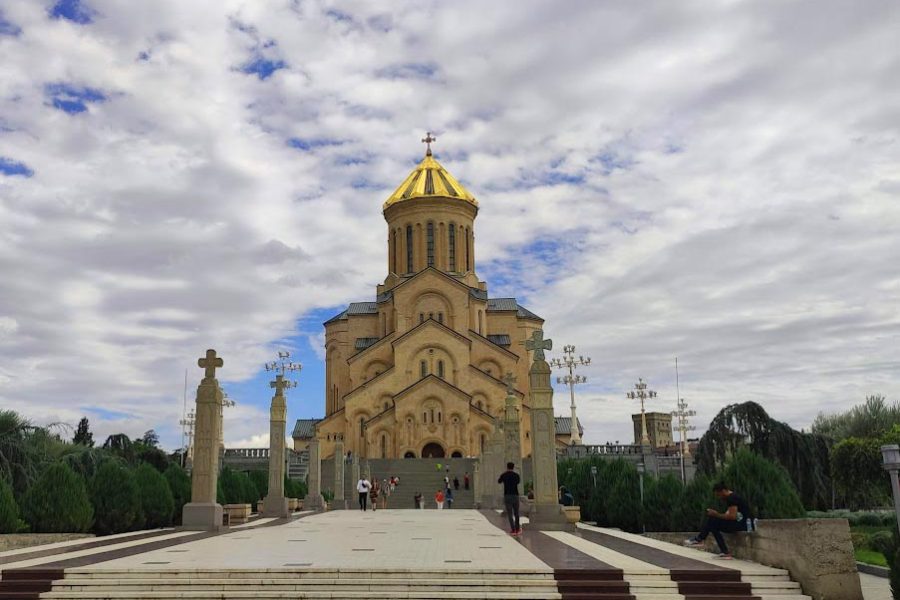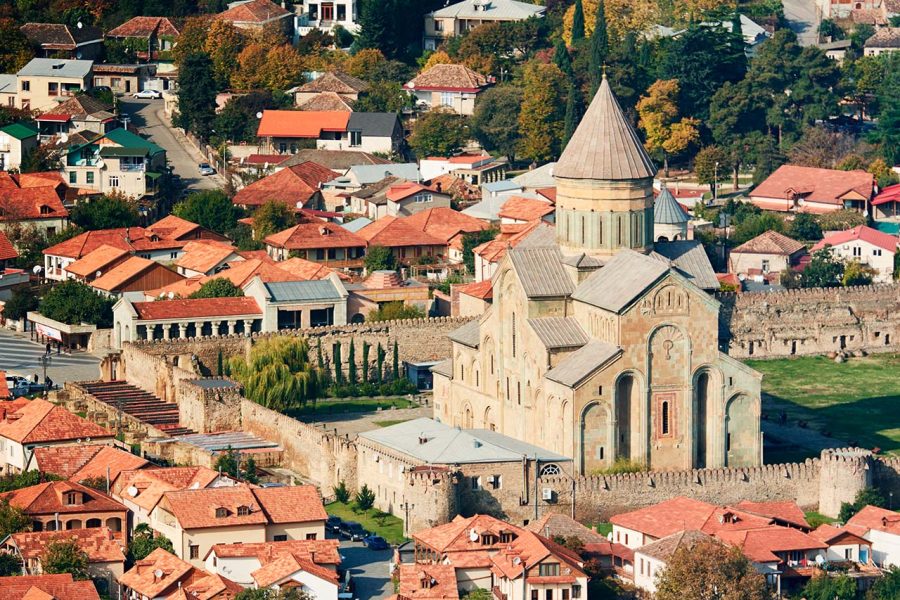Abuli Fortress: A Megalithic Enigma of the Bronze Age
High on the desolate, windswept slopes of the volcanic Mount Abuli, a structure of immense antiquity stands silent against the sky. This is Abuli Fortress, a place that defies our typical image of a castle. Built not with mortar and towers in the Middle Ages, but with colossal, unworked basalt blocks in the deep past of the Bronze Age, it is a true Cyclopean fortress. Its existence poses a tantalizing mystery: who were the people who built this massive stronghold at an altitude of nearly 2,800 meters, and why?
To visit Abuli is to journey to a different timescale. The fortress is constructed using a dry-stone technique, with massive boulders fitted together without any mortar. This megalithic style is characteristic of the Trialeti culture that flourished in the region over three thousand years ago. The walls enclose a vast area, forming a complex of concentric rings around a central citadel. Was it a ritual center, a seasonal refuge for highland tribes, or the capital of a forgotten mountain kingdom? We can only guess.
Exploring the ruins feels like walking on another planet. The dark basalt stones, the vast, empty sky, and the silence broken only by the wind create a powerful and primeval atmosphere. There are no signs of later habitation, no medieval additions. This is a pure, Bronze Age monument, a direct and humbling connection to a distant and enigmatic past.
Abuli Fortress is not a destination for the casual tourist. It is a pilgrimage for the serious adventurer, the hiker, and the lover of prehistory. It reminds us that the story of fortification in Georgia began not with kings and princes, but with the mysterious builders of these megalithic mountain thrones.
🗺️ Geography & Location
Exact Location:
Abuli Fortress is located on Mount Abuli in the Akhalkalaki Municipality of the Samtskhe-Javakheti region, Georgia.
Strategic Placement:
Its extremely high-altitude location on a volcanic plateau suggests it may have been a seasonal refuge or a tribal center with a commanding view of the surrounding highlands.
Coordinates:
Approximately 41.3936° N, 43.6361° E.
📖 History & Background
Date of Construction & Origins:
The fortress is a megalithic structure dating to the Middle-Late Bronze Age (c. 14th-13th centuries BC).
Historical Role:
Its exact function is unknown. It was a major center of a prehistoric “cyclopean” fortress culture. Hypotheses range from a tribal capital to a seasonal refuge or a major cultic site.
Status:
It is an archaeological monument of national significance.
🏗️ Architecture & Design
Materials Used:
Constructed using the dry-stone masonry technique with massive, unhewn basalt boulders.
Key Features:
- Cyclopean Masonry: Characterized by the use of enormous stones fitted together without mortar.
- Concentric Walls: The complex features multiple rings of walls leading to a central citadel.
- Megalithic Dwellings: The area inside the walls contains the foundations of numerous prehistoric dwellings.
Unique Aspects:
Its immense age, megalithic construction style, and pristine prehistoric character make it one of the most important and mysterious ancient monuments in the entire Caucasus region.
🌟 Cultural & Tourist Significance
A Prehistoric Wonder:
The fortress is a site of huge international importance for archaeologists and anyone interested in the Bronze Age.
The Ultimate Adventure:
Reaching Abuli is a major achievement for any hiker, offering a profound sense of discovery and connection to a deep past.
🚶 How to Visit
Best Time of Year to Visit:
The high-altitude location means it is only accessible during a short window in high summer (July-August) when the snow has melted.
Accessibility:
Extremely difficult. Requires a high-clearance 4×4 vehicle to get to the base of the mountain, followed by a long, strenuous high-altitude trek. This journey should only be undertaken by experienced and well-prepared hikers.




Leave a review